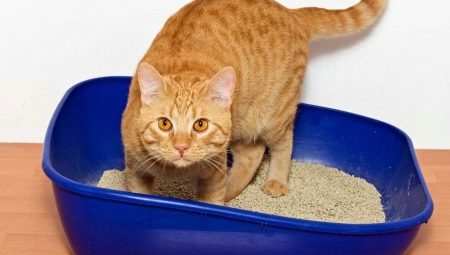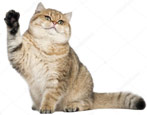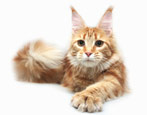An integral part of cat hygiene is a toilet filler. It depends on him how willingly the kitten will go to the tray, the comfort of the animal during the procedure. Not only ease of cleaning, but also the aroma in the house is closely connected with the properties of the filler. All these nuances make people rack their brains when choosing the right tool.


What it is?
The clumping cat litter is made of absorbent material. This property provides bonding of the granules in contact with any liquid. Clay bentonite is usually present in the composition, it swells when absorbed, as a result of which moisture is clogged in the pores of the material.
All components are absolutely harmless to cats.
The product may contain not only clay, but also other absorbents, swellable materials. Mineral components are pre-treated so that the absorbent properties are more pronounced. Cat filler may contain flavors to mask the smell of urine. Some animals refuse to use a toilet with a chemical smell, although it is safe.


Classification
Mating cat fillers are made from different materials, so the properties also vary slightly. All products are classified according to the following criteria.
- Absorption method. The filler can absorb or clump. In the first case, the wet material becomes loose, and in the second, it turns into a solid lump.
- Structure. In the manufacture of synthetic materials (silica gel), minerals (clay), pressed materials (wood, grains) can be used.
- The size of the granules. The filler can be small (1-2 mm), medium (2-6 mm) and large (6-10 mm).
- The weight of the granules. The filler may be light, moderate and heavy.
- Additional properties. This includes flavors, degradability, odor masking, antibacterial properties. Some fillers are adapted for certain cat breeds. The hypoallergenic material is chemical free and labeled accordingly.


A product can combine several properties, so you need to study the packaging very carefully. All products are divided not only into categories, but also into types.
- Woody. Slivers and shavings of conifers are compressed into granules. Large cats are made for adult cats, and small ones for kittens. The filler naturally masks the smell of urine. The product is completely safe for the animal, has no flavorings. In this case, the granules after absorption break up, so the sawdust can be carried around the apartment on the paws of a cat.

- From grain and paper waste. Combines environmental friendliness and low cost. If paper is taken as a basis, then it will be necessary to replace it often. The material has low absorbency. Processed crops (usually corn), on the contrary, have been used for a long time. The product masks the smell and absorbs liquid well due to its high porosity. In both cases, the fillers have light granules, so they easily spread outside the tray.

- Mineral, clay. Fillers of this kind are the most common. As a material, bentonite clays of various types are used. The liquid is absorbed well, as a result, the material swells and turns into a lump. The disadvantage is that it smells poorly, the advantage is easy cleaning.
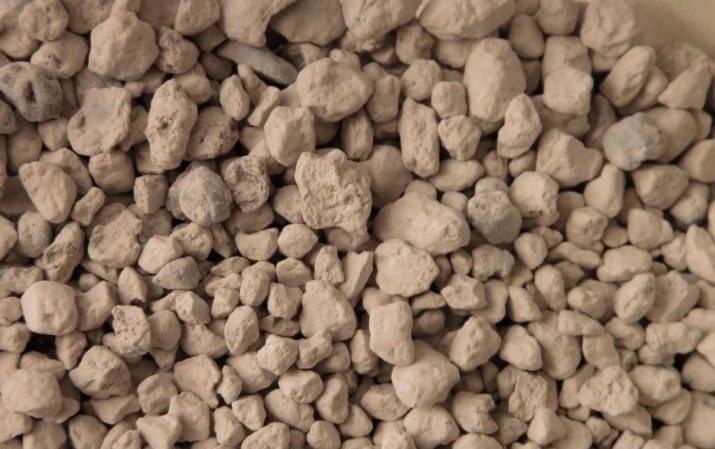
- Soybean. They are made from soy pulp, corn starch and baking soda, therefore they are absolutely safe. This composition ensures the absence of dust during operation. This mixture crumbles due to starch. Soybean cake is porous, so it absorbs liquid well and retains odor.
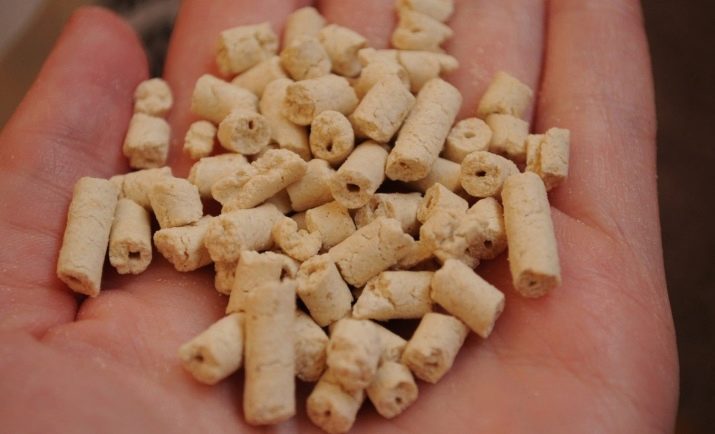
- Silica gel. Made of synthetic material, but are the most technologically advanced. For the manufacture of white granules, polysilicic acid is used. Packaging is expensive, but economical. Full replacement is made every 3-4 weeks, or even less. It absorbs moisture well, retains odors. The disadvantage is a crunch during digging can scare away an animal. The main feature is that you need to store silica gel in a vacuum package, otherwise it will begin to absorb moisture from the air.
Caution should be used for curious kittens. If it enters the mucous membrane, granules can cause burns.

Advantages and disadvantages
The main advantage of this filler is the easy cleaning of the toilet. The urine of the animal is absorbed and turns into a lump. Among the advantages, it is worth noting the following:
- high level of moisture absorption;
- ecological purity of the material;
- safety for the health of a cat of any age and breed;
- easy use;
- relatively low cost;
- thriftiness.
The last factor is due to the fact that during cleaning there is no need to throw out all the filler.
It is enough to remove what is curled up in a lump and to add a little more to the new one.
Full replacement is made only once every 1-2 months.

The disadvantages directly depend on the material used in the manufacture of the filler.
- Wood can be carried by a cat throughout the house, which means that it will always have to be swept away in large quantities.
- Paper and grain fillers are not common, and some animals simply refuse to go into the pot when they are used.
- When using clay and mineral products, you will have to make sure that nothing sticks to the animal's paws.Lumps that are too large can cause cat discomfort.
- Absorbent mineral fillers for the toilet can emit unpleasant odors during cleaning. They are not suitable for animals that refuse the pot even with little pollution.
- Silica gel can irritate the cat with light crackles when absorbed.
Clumping cat filler has both pros and cons. You need to make a choice based on your own preferences and characteristics of the animal. Cats and cats are quite wayward, and may refuse to go to the tray if the filler does not suit them.

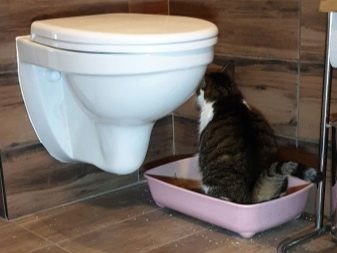
Rating of the best brands
The owners of cats before buying a filler evaluate many factors and the price is far from the last moment on this list. A list of the best and most popular manufacturers will help you make the right choice.
- Ever clean. The composition has a special absorbent - activated carbon. Products are diverse in size, color and flavor.
- "Clean Paws." In the manufacture of bentonite clay is used. Natural substances are used as flavorings. Quite a cheap filler, can be purchased in packages of 15 kg.
- Cat`s Choice. Fillers of the middle price category. Clay is used as the basis for the manufacture.
- Pi-pi-bent. A wide range that suits different breeds of cats. There are special products for cats with long and thick hair. Most of the fillers have aromatic additives. There are separate fillers for kittens without any chemicals.
- Canada Litter. The peculiarity of the filler is that the granule can absorb moisture, the volume of which is 3 times its own weight. Canadian-made merchandise made from clay or corn waste. Natural additives are used as flavorings, the filler is safe for animals of any age.
- Molly Coddle. The assortment is quite wide. Owners can purchase soy, clay, and coal filler. In the latter case, the manufacturer claims that 1 package (7 l) is enough for 3 months. The price is quite affordable. The filler is safe for the animal and pleases the owners with pleasant aromas.



Selection recommendations
The most affordable is wood filler, and most cats treat it well. Clumping mineral and clay product is considered the most natural. Silica gel is one of the more expensive, but also more economical, fillers.
Eco-friendly, but less common is a paper or grain product. Absorbent mineral filler, in turn, is well suited for kittens or several cats that live together.
The market is full of offers, so making a balanced and right choice is especially important. If the animal does not like the filler, then it will refuse to use the toilet, and will react with great distrust to the new product. Consider the main criteria to consider.
- Choose a filler among well-known companies. In this case, you will be able to accurately understand that the quality and environmental friendliness of the product is controlled by both manufacturers and customers.
- For a kitten, use a non-aromatic filler.. Experts also recommend choosing this option for adult animals because finding a suitable aroma can be quite problematic.
- Consider animal habits. If in the kennel a cat has been accustomed to silica gel, then wood filler can cause a tray to be abandoned.
- Choose a product that has the appropriate labeling about the absence of chemical treatment and additives, about environmental safety. When the animal digs the filler with its paws, the dust enters the respiratory system, and the particles enter the digestive system. It is important to ensure the safety of the cat.
- When evaluating the cost of the filler, take into account its efficiency. A cheap product with frequent replacements will lead to higher total costs than an expensive one, which can be changed less often.
- The large granule size is preferably chosen for long-haired adult cats. Small filler can get stuck in the fur and bring the animal discomfort.


Terms of use
Some consumers complain that the filler does not absorb, does not turn into a lump. In fact, this phenomenon does not mean quality, but misuse. Use clumping filler as follows.
- Pour filler into a clean and dry tray with a thick layer. Clay and mineral need to be strewed by 8-10 cm, all the rest can be thinner, but not less than 5 cm. Otherwise, the material will get wet, but will not curl up in a lump. This will result in frequent replacements.
- Remove lumps of liquid and solid waste daily. If necessary, add a small amount of filler so that the layer is not less than acceptable.
- Periodically replace completely and wash the tray. Count the frequency of cleaning individually, it is recommended to carry out them once a month.
- Dispose of used filler only in the garbage can. If the main material is corn, then it is allowed to flush into the toilet. All other components clog the sewer pipes.


Reviews
Buyers claim that clumping filler is really convenient to use. It is worth choosing the right material to mask the unpleasant odors of urine. For the formation of lumps, it is important to follow certain instructions, pour a thick layer into the tray.
The owners of cats choose such a product because it facilitates cleaning and does not harm the animal. Natural materials are safe, do not cause allergic reactions. You can choose a filler suitable for cats with long hair. In most cases, kittens quickly get used to such a toilet, because the filler resembles a natural habitat. Particularly successful is the training of animals that have been picked up on the street.

Tips for choosing a filler, see below.
